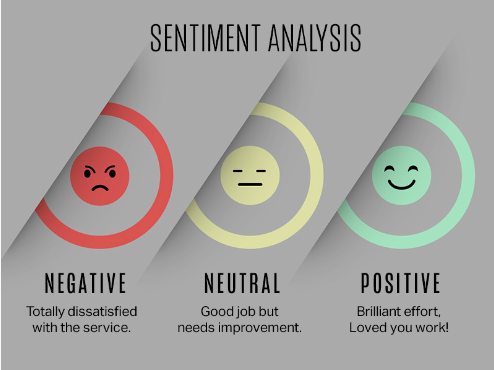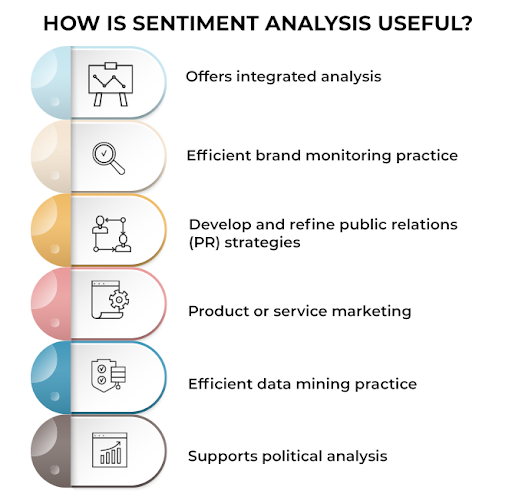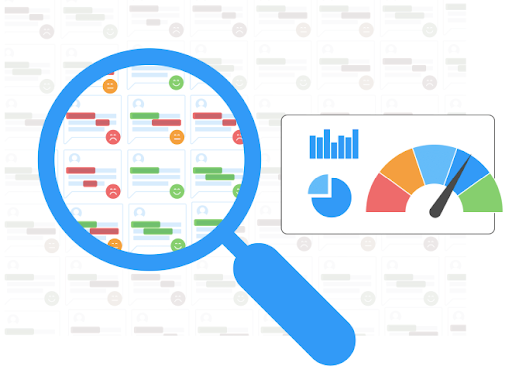In today’s digital age, email remains a cornerstone of communication, both in personal and professional contexts. Understanding the sentiment behind emails—the emotional tone expressed—can significantly enhance how we interpret and respond to the messages we receive. For businesses, email sentiment analysis is crucial for improving customer service, monitoring brand reputation, and enhancing internal communication.
By analyzing customer emails through customer service email sentiment analysis, businesses can gauge satisfaction and identify areas for improvement, allowing for proactive customer service and reputation management. Within companies, understanding employee sentiment through emails can provide insights into workplace morale and help address potential concerns early.

In personal communication, analyzing email sentiment for customer feedback can improve relationships by ensuring the emotional tone of emails is understood correctly, reducing the chances of miscommunication. To gain deeper insights, individuals can refer to this customer feedback analysis guide, which offers tips for interpreting feedback effectively. It also aids in conflict resolution by identifying negative sentiment, enabling individuals to address and resolve issues more effectively.
To harness the power of email sentiment analysis, two primary methods are widely used: rule-based sentiment analysis, which uses predefined rules and dictionaries to assess emotional tone, and machine learning-based sentiment analysis, which employs algorithms and models to predict sentiment with greater accuracy and adaptability. In the following sections, we will explore these methods in detail, highlighting their advantages, disadvantages, and practical applications.
What is Email Sentiment Analysis?

Email sentiment analysis is the process of evaluating the emotional tone of an email’s content. This involves using various techniques to classify the sentiments expressed in the email as positive, negative, or neutral. By using email text analytics to analyze the words, phrases, and context within the email, sentiment analysis helps decipher the underlying emotions and intentions of the sender, providing valuable insights into their feelings and attitudes.
Why is Email Sentiment Analysis Important for Businesses and Individuals?

Improve Customer Service:
For businesses, understanding the sentiment of customer emails is crucial. By analyzing these emails with automated sentiment analysis for customer emails, companies can gauge customer satisfaction levels and identify common pain points. For more insights, businesses can explore customer sentiment analysis use cases to see how this technology can improve customer interactions. This enables businesses to respond more empathetically and effectively to customer concerns, improving customer service with email sentiment analysis. Prompt and appropriate responses to negative sentiment can turn dissatisfied customers into loyal advocates, enhancing customer retention and satisfaction.
Enhance Internal Communication:
Within an organization, email sentiment tracking in customer service can be a powerful tool for monitoring and improving internal communication. By analyzing employee emails, management can gain insights into the overall morale and well-being of their teams. Detecting negative sentiment early can help address issues before they escalate, fostering a more positive and productive work environment. This proactive approach can lead to better teamwork, higher employee engagement, and reduced turnover rates, emphasizing the value of positive customer sentiment in building strong relationships.
Monitor Brand Reputation:
In today’s fast-paced digital world, brand reputation can be significantly impacted by the sentiments expressed in emails from customers, partners, and stakeholders. Email sentiment analysis allows businesses to keep a pulse on how their brand is perceived, identifying emerging issues and opportunities. For example, recognizing the importance of positive sentiment can help companies craft effective strategies. By swiftly addressing negative sentiment, companies can protect and enhance their brand image, ensuring they maintain a positive reputation in the market.
Method 1 – Rule-Based Email Sentiment Analysis

Rule-based email sentiment analysis is a straightforward approach to evaluating the emotional tone of text by using predefined rules and dictionaries. These rules are crafted based on linguistic patterns and keywords that indicate positive, negative, or neutral sentiments. By matching words and phrases in an email to these predefined lists, this method assigns a sentiment score, providing a basic understanding of the email’s emotional content.
Rule-based sentiment analysis operates on the principle of matching text against a set of sentiment-bearing words. For instance, words like “happy,” “great,” and “excellent” are tagged as positive, while “sad,” “terrible,” and “poor” are tagged as negative. The analysis aggregates these scores to determine the overall sentiment of the email.
Pros:
- Simple to Implement: This method is easy to set up and requires minimal computational resources. It is accessible even for those with limited technical expertise.
- Customizable Based on Specific Needs: The predefined rules and dictionaries can be tailored to fit the unique language and terminology used in a specific industry or organization, such as in customer service email sentiment analysis.
Cons:
- Limited by Predefined Rules: The method relies heavily on the predefined rules and may not account for context or the evolving nature of language.
- May Miss Nuances in Language: Sarcasm, idioms, and complex sentence structures can be challenging for rule-based systems to accurately interpret, leading to potential misclassification of sentiment in email sentiment tracking in customer service.

How Does Rule-Based Email Sentiment Analysis Work?
1. Define Sentiment Keywords:
Create a comprehensive list of words and phrases associated with positive, negative, and neutral sentiments. This list forms the foundation of the rule-based system.
Example:
- Positive: “happy,” “great,” “fantastic,” “love.”
- Negative: “angry,” “bad,” “horrible,” “disappointed.”
- Neutral: “okay,” “average,” “fine,” “acceptable.”
2. Set Rules:
Determine how these words will be scored. Assign numerical values to the sentiment keywords (e.g., +1 for positive words, -1 for negative words, 0 for neutral words).
Define rules for aggregating these scores to assess the overall sentiment of an email. For instance, a total score above 0 could indicate a positive sentiment, while a score below 0 indicates a negative sentiment.
3. Implement:
Apply these rules to analyze the email content. This can be done using simple scripts or software tools designed for text analysis.
Parse the email text, match words to the predefined sentiment lists, and calculate the overall sentiment score.
Examples of Rule-Based Email Sentiment Analysis
Example 1:
Email Content: “I had a great experience with your service. The support team was fantastic and very helpful.”
Analysis:
- Positive words: “great,” “fantastic,” “helpful.”
- Sentiment Score: +3 (indicating a positive sentiment).
Example 2:
Email Content: “I am very disappointed with the product quality. It was terrible and not worth the price.”
Analysis:
- Negative words: “disappointed,” “terrible.”
- Sentiment Score: -2 (indicating a negative sentiment).
Rule-based email sentiment analysis provides a quick and simple way to gauge the emotional tone of emails. While it has its limitations, it can be a valuable tool for basic sentiment assessment, especially when customized to the specific context in which it is used. Utilizing customer service automation software for email sentiment analysis can enhance the effectiveness of this approach, ensuring more accurate evaluations of customer interactions.
Method 2 – Machine Learning-Based Email Sentiment Analysis

Machine learning-based sentiment analysis is an advanced technique that uses algorithms and models to predict the sentiment of text. Unlike rule-based methods, this approach does not rely on predefined lists of sentiment-bearing words. Instead, it leverages machine learning algorithms that learn from large datasets to understand and interpret the nuanced sentiments expressed in emails. These models can identify patterns in the data, making predictions based on learned relationships between words, phrases, and their associated sentiments. Customer sentiment analysis for support allows businesses to better understand the emotional tone of customer emails, improving response strategies.
Pros:
- More Accurate and Nuanced: Machine learning-based email sentiment analysis models can capture complex patterns and subtle nuances in language, making them more accurate than rule-based methods for email sentiment tracking in customer service.
- Can Learn and Improve Over Time: As more data is fed into the system, automated sentiment analysis for customer emails continues to improve and adapt, enhancing predictive capabilities.
Cons:
- Requires More Data and Computational Power: Effective machine learning models need large datasets for training and significant computational resources for processing email text analytics.
- Can Be Complex to Implement: Setting up and fine-tuning sentiment analysis software for customer service emails using machine learning requires expertise in data science and machine learning, making it more challenging for beginners.
How Does Machine Learning-Based Email Sentiment Analysis Work?
Data Collection:
- Gather a large dataset of emails with labeled sentiments. These labels can be positive, negative, or neutral and are used to train the model.
- Analyzing email sentiment for customer feedback becomes more effective with a comprehensive dataset.
- Ensure the dataset is diverse and representative of the various types of emails the model will encounter.
Model Selection:
- Choose a suitable machine learning model. Common choices include Support Vector Machines (SVM), Naive Bayes, and Neural Networks.
- Consider the complexity of the model and the computational resources available for real-time sentiment analysis for customer service emails.
Training:
- Train the model on the labeled dataset. During this phase, the model learns to associate certain words and patterns with specific sentiments.
- Use techniques such as cross-validation to ensure the model generalizes well to new, unseen data.
Testing:
- Test the model’s accuracy using a separate dataset not used in training.
- This step helps evaluate how well the model performs in predicting sentiment.
- Metrics such as precision, recall, and F1-score can be used to assess the model’s performance.
Implementation:
- Deploy the trained model to analyze email content in real-time or batch processing.
- This can be integrated into existing email systems or customer service platforms.
- Monitor the model’s performance and periodically retrain it with new data to maintain accuracy in NLP for email sentiment in customer service.
Examples of Machine Learning-Based Email Sentiment Analysis
Example 1:
- Email Content: “I’m absolutely thrilled with the new update! It has made everything so much easier and efficient.”
- Analysis: The machine learning model identifies phrases like “absolutely thrilled” and “so much easier” as indicators of positive sentiment.
- Sentiment Score: High positive sentiment.
Example 2:
- Email Content: “The recent changes are disappointing and have made the system cumbersome to use.”
- Analysis: The model recognizes words like “disappointing” and “cumbersome” as negative indicators.
- Sentiment Score: High negative sentiment.
Machine learning-based sentiment analysis provides a powerful and flexible approach to understanding the emotional tone of emails. By leveraging sophisticated algorithms and vast amounts of data, this method can provide deeper insights and more accurate sentiment predictions, making it an invaluable tool for improving customer service through customer sentiment analysis with email sentiment analysis.
Comparing the Two Methods of Email Sentiment Analysis
1. Ease of Implementation in Email Sentiment Analysis
When it comes to ease of implementation, rule-based email sentiment analysis has the upper hand. It is straightforward to set up, requiring only a predefined list of sentiment-bearing words and simple rules for scoring. This method does not demand extensive technical expertise or computational resources, making it accessible for individuals and small businesses with limited budgets. In contrast, machine learning-based email sentiment analysis for customer service involves a more complex setup process. It requires collecting and labeling large datasets, selecting and training appropriate models, and ensuring the availability of sufficient computational power. This complexity makes it more challenging to implement, especially for those without a background in data science. To optimize your approach, consider the best practices for customer support to enhance implementation success.
2. Accuracy in Email Sentiment Analysis
Machine learning-based email sentiment analysis excels in terms of accuracy. Its ability to learn from large datasets allows it to capture subtle nuances and complex patterns in language that rule-based methods often miss. AI email sentiment analysis for support can handle context, sarcasm, and varied linguistic expressions more effectively, resulting in more accurate sentiment predictions. Rule-based methods, while simpler, can struggle with these complexities, leading to potential misclassifications. They rely heavily on static rules and dictionaries, which can limit their ability to accurately interpret diverse and evolving language usage in email sentiment tracking in customer service.
3. Scalability in Customer Service Email Sentiment Analysis
Scalability is another area where machine learning-based email sentiment analysis outshines rule-based methods. As the volume of emails increases, rule-based systems can become cumbersome to manage and maintain. The static nature of their rules requires constant updates to remain effective, and processing large amounts of text can be slow. In contrast, machine learning models are inherently designed to handle large-scale data. Once trained, they can efficiently process vast amounts of email content using email text analytics, making them better suited for enterprises that need to analyze large volumes of communication data regularly. This makes automated sentiment analysis for customer emails and real-time sentiment analysis for customer service emails more efficient for businesses looking to scale their efforts in customer service automation.
Use Cases of Email Text Analytics Across Different Industries
Small Businesses
- Customer Feedback: Small businesses can use customer feedback analysis through email sentiment analysis to quickly assess customer feedback from emails, allowing them to address concerns and improve services.
- Social Media Monitoring: Simple rule-based systems can be implemented to monitor social media mentions, helping small businesses manage their online reputation without significant investment. Email sentiment tracking in customer service is especially beneficial for small businesses to keep up with their online presence.
Large Enterprises
- Customer Support Centers: AI email sentiment analysis for support can be integrated into customer support centers to automatically analyze the sentiment of incoming emails and prioritize responses based on urgency and sentiment.
- Market Research: Large companies can use advanced email text analytics to gain insights from large datasets of customer reviews, feedback forms, and social media mentions, aiding in strategic decision-making.
- Employee Satisfaction: Enterprises can monitor internal emails to gauge employee sentiment and morale, helping HR departments identify and address potential issues proactively. Elevating employee productivity through automated sentiment analysis for customer emails can streamline this process.
Healthcare Industry
- Patient Feedback: Healthcare providers can use email sentiment analysis to evaluate patient feedback from emails and surveys, enhancing patient care and satisfaction.
- Drug Safety Monitoring: Pharmaceutical companies can analyze emails and reports from healthcare professionals and patients to detect early signals of adverse drug reactions. NLP for email sentiment in customer service can also be utilized in this context.
Financial Services
- Client Communications: Financial institutions can apply sentiment analysis software for customer service emails to client emails to identify dissatisfaction and address concerns promptly, improving client retention and trust.
- Market Sentiment Analysis: Financial analysts can use analyzing email sentiment for customer feedback to gauge market sentiment by analyzing large volumes of news articles, financial reports, and social media posts, aiding in investment decisions.
Education Sector
- Student Feedback: Educational institutions can employ email sentiment analysis to evaluate feedback from students, helping to improve teaching methods and campus facilities.
- Alumni Relations: By analyzing emails from alumni, universities can gauge sentiment and engagement levels, tailoring their communication strategies for better alumni relations.
E-commerce
- Product Reviews: E-commerce platforms can use machine learning-based email sentiment analysis to sift through vast amounts of product reviews, identifying common issues and improving product offerings.
- Customer Service: Email sentiment tracking in customer service can help e-commerce businesses prioritize and respond to queries more effectively, enhancing the customer experience.
Conclusion
Understanding email sentiment analysis offers valuable insights for both businesses and individuals in navigating the complexities of modern communication. Whether through the straightforward approach of rule-based methods or the advanced capabilities of ai email sentiment analysis for support, analyzing the emotional tone of emails enhances customer service, improves internal communication, and safeguards brand reputation.
Each method has its strengths—rule-based analysis for simplicity and cost-effectiveness, and machine learning-based email sentiment analysis for accuracy and scalability—making them versatile tools suited to different organizational needs. By mastering these methods, users can harness the power of customer sentiment analysis software for customer service emails to foster better relationships, resolve conflicts, and make informed decisions based on the true sentiments expressed in their email communications.
FAQs
1. What is email sentiment analysis and why is it important?
Email sentiment analysis is the process of using AI to detect the tone and emotion behind customer emails. It helps businesses understand customer satisfaction, identify issues early, and tailor responses effectively. Wizr AI offers advanced email text analytics tools to enhance sentiment detection and improve customer communication.
2. What are the two main methods used for email sentiment analysis?
The two main methods are lexicon-based analysis, which relies on predefined word sentiment scores, and machine learning-based analysis, which uses AI models trained on large datasets for more accurate sentiment detection. Wizr AI integrates both methods to deliver precise email sentiment insights.
3. How does email text analytics improve customer support?
Email text analytics processes unstructured email data to extract valuable insights like sentiment, intent, and key topics. This helps support teams prioritize urgent emails and personalize responses. Wizr AI’s platform uses powerful email text analytics to optimize customer support workflows.
4. Can email sentiment analysis help reduce response times?
Yes, by automatically classifying and prioritizing emails based on sentiment, support teams can respond faster to negative or urgent messages. This improves first contact resolution and customer satisfaction. Wizr AI enables real-time sentiment scoring to accelerate support response.
5. How can businesses implement email sentiment analysis effectively?
To implement effectively, businesses should choose platforms that combine robust AI models with easy integration into existing systems. Training models with relevant data ensures accuracy. Wizr AI provides scalable solutions for seamless email sentiment analysis that fits diverse business needs.
About Wizr AI
Wizr AI is an Advanced Enterprise AI Platform that empowers businesses to build Autonomous AI Agents, AI Assistants, and AI Workflows, enhancing enterprise productivity and customer experiences. Our CX Control Room leverages Generative AI to analyze insights, predict escalations, and optimize workflows. CX Agent Assist AI delivers Real-Time Agent Assist, boosting efficiency and resolution speed, while CX AutoSolve AI automates issue resolution with AI-Driven Customer Service Automation. Wizr Enterprise AI Platform enables seamless Enterprise AI Workflow Automation, integrating with data to build, train, and deploy AI agents, assistants, and applications securely and efficiently. It offers pre-built AI Agents for Enterprise across Sales & Marketing, Customer Support, HR, ITSM, domain-specific operations, Document Processing, and Finance.
Experience the future of enterprise productivity—request a demo of Wizr AI today.
